Choosing a kitchen knife might seem like an easy task, but in truth, it is not as easy as ABC. Finding the right type of knife that you will be comfortable using for years to come is important, especially if you tend to spend more time cooking in the kitchen.
When it comes to food preparation, a kitchen knife plays a vital role in ensuring that the food is properly cut or sliced. Cutting and slicing ingredients into smaller pieces will not only make the food preparation process easier, but will also ensure that the ingredients are safe for consumption by removing unwanted parts.
Although a knife is often associated with cutting and slicing, some knives are created with their very own specialties.
This article will provide the necessary information regarding the 6 common types of knives, to help you make the right decision in choosing your knife.
1. Chef Knife
A chef knife is the most common knife that can be found in Malaysian households. Often comes in various sizes, a chef knife is used to cut, dice, slice, and chop ingredients. It is the most common type of knife and is easy to maneuver. The knife parts include a handle, blade, point, and edge. The handle is made to ensure that you have a firm grip on the knife and can guide the blade while you are cutting through your ingredients.
When it comes to blade length, a larger knife can be good for processing a lot of ingredients quickly, as you can add more ingredients to the cutting board and the knife would be able to reach them. This could save a lot of preparation time and ease your workload. However, a larger knife can also be difficult to use if you have a small space or a small cutting board. You won’t be able to use it efficiently as it might be too big to move around, thus becoming a hindrance while you’re in the kitchen.
A smaller knife is great for people with limited space. Although they cannot prepare ingredients as fast as a larger knife, they provide more control to the tip, as it has more pinpoint control. The chef will be able to see where the tip of the blade will be by using a smaller knife, thus making this perfect for finer work. A 6 inches knife is also big enough to do the chopping, slicing, and mincing work.

One of the best chef knives for
beginners is Switzerland-made Victorinox’s Fibrox chef knife. Fibrox is a food service-oriented
knife, which is easy to wash and will ensure its safety for food preparation.
2. Boning Knife
A boning knife is a kitchen knife
with a sharp point and a thin, flexible blade. It is used to remove the bones
of poultry, meat, and fish. It often comes in smaller sizes to ensure precision
and control. Unlike the regular chef knife, the boning knife allows the chef to
cut off meat attached to the bones, as well as remove bone pieces from the
meat. The thin and flexible blade makes it easier for the knife to be
maneuvered, ensuring that the meat would not be damaged during the bone removal
process.
The blade shape plays a
role in how you use your knife, whether you use it for slicing, dicing, or even
chopping. A good chef knows how to use the shape of the blade to maximize work
proficiency while maintaining a low effort or movement, keeping a more calm and
collective self while in the kitchen.
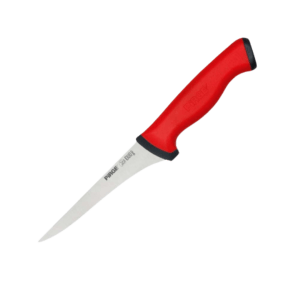
The Pirge Duo boning knife provides smooth and flexible maneuverability as it comes in a smaller size and a thin blade. The blade is made of stainless steel and resistant to rusting. The knife’s condition can be maintained with proper care and requires less effort to keep it at top condition, as stainless steel knife is not prone to oxidation.
3. Skinning Knife
A skinning knife, like the name suggested, is used to cut animal skin properly. The removal of animal skin is important to prepare the meat beneath for cooking and consumption. Some animal skins can be chewy if cooked together with the meat, thus ruining the taste of the food. A thinner blade makes the skinning process easier. The blade thickness will determine the precision of the cut, while the curved tip of the blade can avoid damaging the meat while skinning.
For a more delicate and precise cut, a thinner knife would be more ideal, compared to a thicker knife. Having a thinner blade allows the chef to guide the direction of the blade more easily. A thin design also makes the knife lighter as it does not have much weight in it. As skinning work requires precision in it, a thin blade is the best choice.
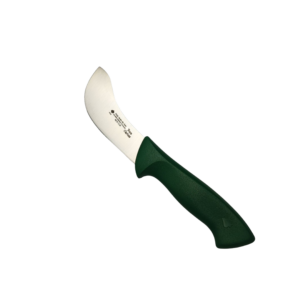
F. Herder skinning knife is designed to cut animal skins. The blade is made of stainless steel, making it easier to maintain the condition. The blade is thin and light, making the knife a handle heavy knife. A handle-heavy knife means that it has a heavier side on its handle to give the chef more control and ensure a stronger grip on the handle.
4. Slaughter/Butcher Knife
A slaughter knife, also known as the butcher knife, is designed for slaughtering animals and breaking down large pieces of meat with its long and curved blade. Compared to the chef knife, a slaughter knife is longer and heavier. The blade can cut through soft bones, which cannot be done by a chef knife’s blade. A larger knife tends to have a blade-heavy side as it increases the size of its blade to maximize prepping or chopping work.
Most knives have a small bump at the end of the handle to help strengthen your grip, ensuring that the knife does not slip out of your hand easily. The slaughter knife’s blade length is much longer compared to the handle’s length, which means that most of the weight comes from the blade.
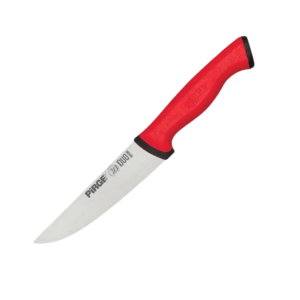
The Pirge Duo butcher knife has a flat and narrow blade shape. When using this knife, the handle will be moved while the belly maintains on the surface of the cutting board. It can also be used for up-and-down slicing, due to its straight spine. The knife is used for heavy work as the blade thickness on the cross-section, spine, and edge can provide support when there is a lot of stress on the blade.
5. Cleaver
A cleaver is a large knife with a rectangular-shaped blade, mainly used for cutting through thick pieces of meat or bones. The size of the blade is quite large, making the knife a lot heavier when compared to other types of knives. When using the cleaver, the best way to cut through soft bones is by lifting the handle, while having the blade pointing on the cutting board, and moving the handle downwards, with one hand pushing from the spine. This allows for a more precise cut, makes it easier to guide the blade, and reduces the impact on the cutting board.
A cleaver is made of stainless steel blades, which provide long-term durability and sharpness. A knife made of stainless steel is resistant to rust and patina over time. A patina is a green or brown surface on steel that is created from oxidation over a long time. Patina or rust usually happens to knives that are made from carbon steel, which is more reactive to its environment.
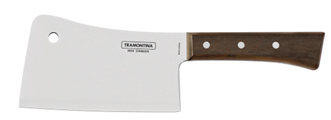
A Tramontina cleaver is a very useful kitchen tool for splitting poultry, cutting through bones, and disjointing meat. The blade is more robust than a chef knife or slaughter knife, as the weight of the blade helps heavier work, like cutting through bones. The cleaver’s dull heel ensures that the chef’s hand is not accidentally injured if the hand moved from the handle to the blade.
- Paring Knife
A paring knife is a small knife used to peel or cut fruits and vegetables into smaller pieces. The small size provides more precise work when it comes to the cutting and peeling process. The knife is usually used for light work. The knife is very easy to clean and provides a comfortable, easy grip due to its petite size.
The knife is designed to be flat along the edge, which is perfect for the slicing technique. The blade shape provides a clear vision for the chef to see where the edge would hit and how well it will cut while maintaining a good posture while working in the kitchen. The chef can also easily guide the blade through fruit during the peeling process.
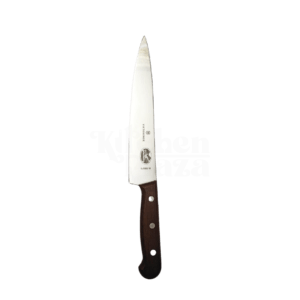
F. Herder paring knife uses stainless steel blade, with an ergonomic plastic handle, which provides an anti-slip structure for a stronger grip. The knife is very easy to use as it requires little effort to control the blade during the peeling process.
Knowing the different types of knives will allow you to choose which knife is the most suitable one for you. If you are interested to purchase these knives, you can buy them from Kitchen Plaza. Kitchen Plaza provides a worry-free purchase, allowing you to pay in installments. Kitchen Plaza will also provide replacement if the product is damaged during the delivery process. The knives are 100% authentic, with money-back guaranteed.
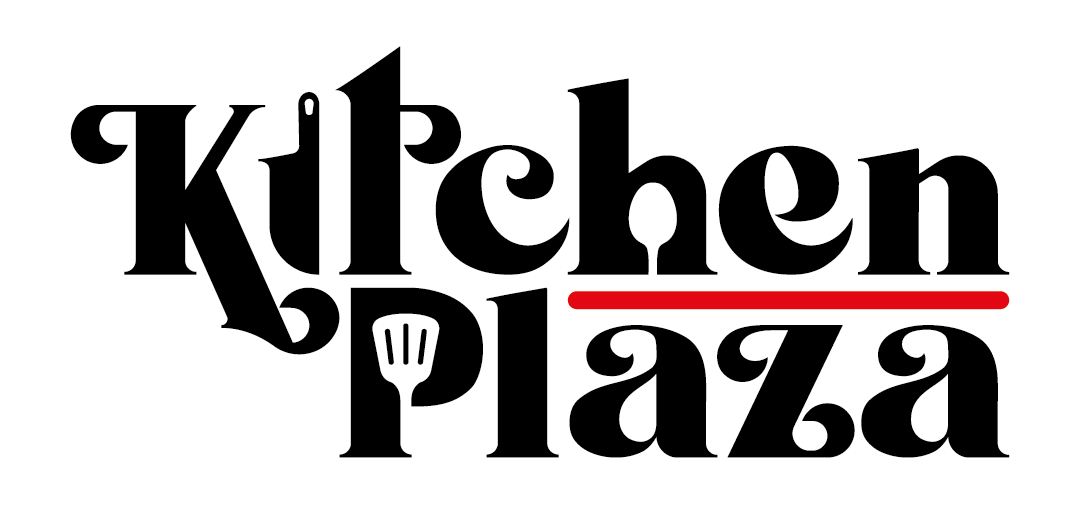
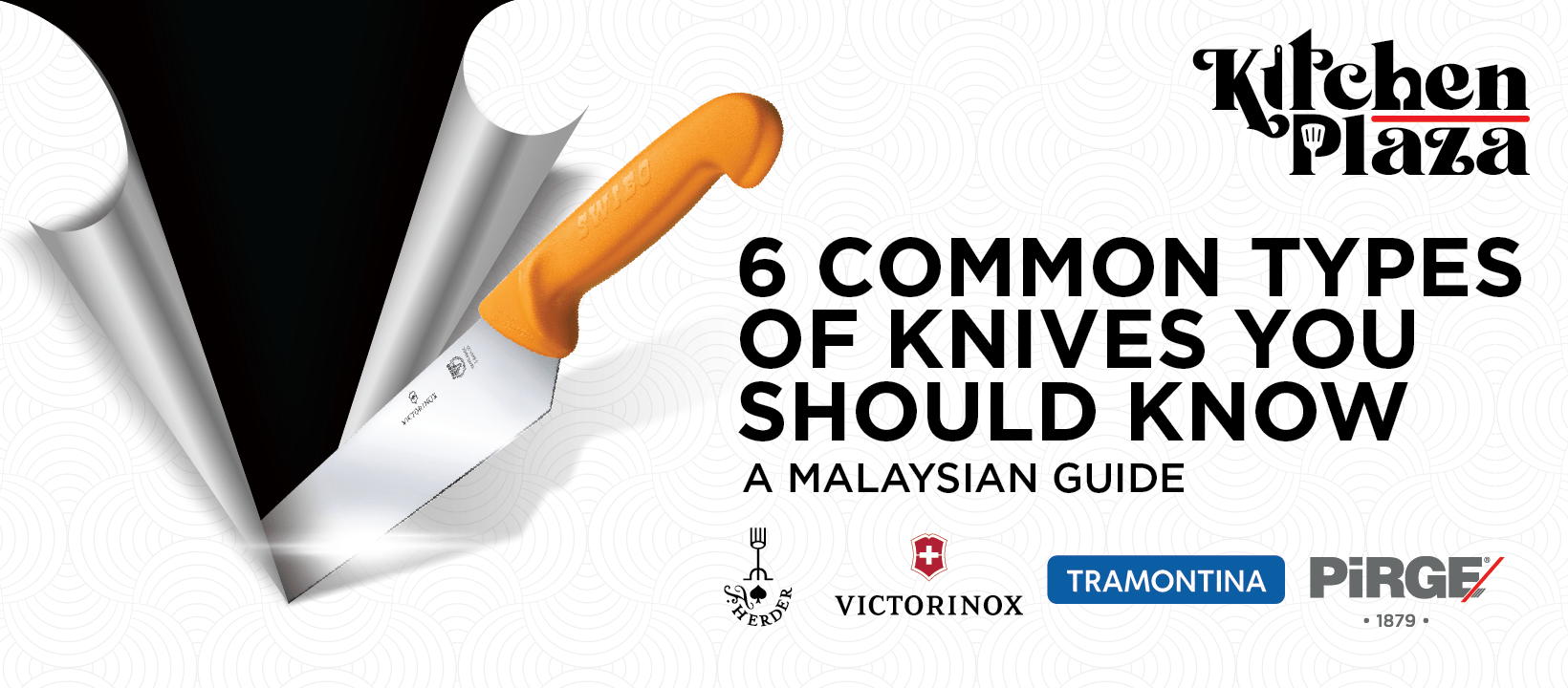




Add comment